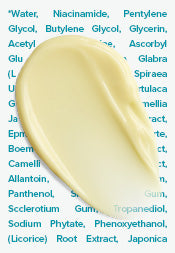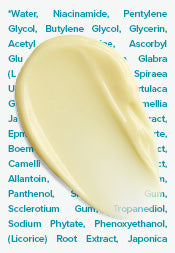How Are Omega Fatty Acids, Ceramides, & Peptides Different?
The truth is there isn’t a single best ingredient for skincare. Research has clearly shown that skin needs an abundance of beneficial ingredients, including omega fatty acids, ceramides, and peptides (along with many others), as the skin is complicated and needs an array of skin-natural ingredients to look young and healthy. Dr. Beth McLellan says, “everyone’s skin is different depending on their age, hormonal status, medications, and more and an individualised approach is best.”
We never want you to worry if you’re getting enough of the best ingredients for your skin, which is why Paula’s Choice skincare products are formulated to contain a mix of brilliant ingredients. The next step is for you to determine which of these ingredients or mix of ingredients is right for you, but it’s not as difficult as it might seem; in fact, it’s a matter of preference and of experimentation to see which ones perform ideally for the results you want.
When it comes to our products containing omega fatty acids, ceramides, and peptides, the following is what you need to know to help you decide which ones are right for you. What you’ll notice is that these ingredient groups have some similarities and some significant differences.
Omega fatty acids are superior for:
- Increasing and maintaining hydration
- Reinforcing and strengthening skin’s surface
- Reducing dryness
- Reducing redness and signs of sensitivity
- Improving the appearance of wrinkles
- Protecting skin from signs of environmental damage
Omega fatty acids differ from ceramides and peptides because they:
- Excel at calming skin, including environmentally damaged skin
- Are excellent for retaining moisture; each omega works individually and as part of a team
- Do not have a visible firming or skin tone – improving effect
Ceramides are superior for:
- Increasing and maintaining hydration
- Reinforcing and strengthening skin’s barrier
- Protecting the skin from signs of environmental damage
- Improving the appearance of wrinkles
- Teaching skin to look firmer and feel more resilient
Ceramides differ from omega fatty acids and peptides because they:
- Help skin learn how to restore and renew itself
- Teach skin how to make more of its own ceramides
- Are naturally present at optimum levels in young, healthy skin
- Do not have a visible effect on skin tone or discolorations
Peptides are superior for:
Each individual peptide (and there are many) can educate the skin to do something distinctive, like improve the appearance of skin tone, firm, diminish the appearance of wrinkles by encouraging layers of skin to act like younger skin, and maintaining a smooth, healthy-looking surface.
Peptides differ from omega fatty acids and ceramides because they:
- Can be engineered to deliver benefits targeted at numerous concerns
- Can train your skin’s surface to look younger in multiple ways
- Restore proteins, which are the building blocks of skin
- Aren’t as hydrating as ceramides or omega fatty acids, but work beautifully with those ingredients
Do You Need All of Them?
Whether or not you need all of these ingredients depends on your skincare needs and skin concerns, but certainly, they are all great to use and can benefit all skin types.
For some skincare needs, if ceramides, peptides, and omega fatty acids are all found in one product, that’s great. But for advanced concerns, you will want products with concentrated amounts that can be layered with the other products you’re using.
If you have dry, dehydrated skin or if your skin is sensitive or prone to redness, you will see the most benefit by using a mix of products that contain omega fatty acids, ceramides, and peptides.
If your skin is a combination of oily or breakout-prone, omegas are fine, but you’ll likely derive greater benefits from ceramides that support the skin's barrier.
Speaking of signs of ageing, all three groups of ingredients will bring about noticeable improvements in your skin, from enhancing resilience to diminishing the look of lines, wrinkles, and uneven texture, and you can begin using them at any age. According to Dr. McLellan, “achieving a healthy skin barrier is always my first goal. We can’t begin any potentially irritating treatments like retinoids until we address the dryness and irritation.”
Experiment with various products that contain these ingredients, layering them all at once or using them on alternate days. We predict you’ll find that each group’s similarities and differences add up to exponentially better skin!
Learn more about skincare ingredients.
Shop our range of omega fatty acid, peptides and ceramides skincare essentials.
References for this information:
Oregon State University Micronutrient Information Center, Accessed February 2022, ePublication
Scientific Reports, January 2020, ePublication
International Journal of Molecular Sciences, January 2020, ePublication
Clinical, Cosmetic, and Investigational Dermatology, October 2018, pages 491–497
Clinics in Dermatology, October 2017, ePublication and July-August 2010, pages 440–451
International Journal of Cosmetic Science, June 2017, pages 284–291
Journal of Cosmetic Dermatology, December 2016, pages 549–558
ChemMedChem, August 2016, pages 1850-1855
Bulletin of Experimental Biology and Medicine, May 2016, pages 175–178












